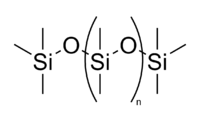All kinds of recycled rubber materials are often referred to as ‚ÄúReclaim‚ÄĚ.¬†So much so that you would think it had become a generic term.¬†This is not true.¬†Rubber reclaim, Reclaimed Rubber, or just Reclaim, is a very specific type of material.
It refers to vulcanised (cured) waste or scrap that has been rendered fit for re-use by a complicated thermochemical process.
The waste rubber is granulated quite small to release and facilitate the removal of any metal and fabric that may be present.¬†It is then subject to a combination of heat, pressure and chemical softening / plasticising¬† agents¬† for a period of time in a large retort.¬†After discharge, the treated waste is refined to remove any nibs or hard bits of unprocessed material.¬†This is done by extruder sieving and/or a refining mill.¬†The later is like a normal rubber processing mill, but with short, stubby rolls with a pronounced camber and high friction ratio.¬†The material passes repeatedly through the mill and the coarse ‚Äúbits‚ÄĚ are pushed out to the sides of the mill nip (the wider part, due to the camber) and fall out into catchment trays at each side.¬†The good, refined material is taken off the mill as a paper thin sheet and wound up on itself to make thick slab.¬†The material from the sides can be used to make lower grade, coarser ‚Äútailings‚ÄĚ reclaim.
Basic properties
The reclaim still contains the same amount of rubber hydrocarbon, carbon black, fillers and process aids that were in the original rubber compound, plus the extra softeners that were added.¬†The process has NOT broken the sulphur cross-links, but has broken the polymer chains down into shorter lengths, radiating out from the cross-links.¬†In effect looking like a ‚Äústar fish‚ÄĚ shape.
This produces a new raw material that has the same basic chemical make up as the original, but is :-
- Softer
- More pliable
- Easier to process
- Will act as a process aid in new compounds
- ‚ÄúShape retaining‚ÄĚ due to the new 3D structure
- Capable of being re-vulcanised (requires the addition of sulphur / accelerators or similar). With no further additions it will produce a cured sheet and this is used as one of the basic quality control tests to check hardness, tensile strength, etc of the reclaim itself.
Why should you use it?
For the compounder:-
From a purely technical point of view, it is a raw material that should not be ignored. If you need to formulate a good quality NR or SBR black compound, the addition of tyre reclaim will not add anything that is probably not already there i.e. there will be no compatibility problems.
If you are going to make a cheap, low quality commercial black compound, the sky‚Äôs the limit.¬†You can add as much reclaim as you want. (as mentioned above ‚Äď reclaim alone, plus sulphur and accelerator can be cured just like a full compound. The physical properties are not very high, but they are there, unlike a cheap filler which can only reduce the properties).
If you need to improve the processability, the addition of extra oil or softeners will often leave the uncured compound ‚Äúlimp‚ÄĚ and sticky.¬†Reclaim will overcome the problem ‚Äď it has already been softened and it really will help processing ‚Äď particularly extrusion and calendering – its 3D structure makes the resultant compound almost thixotropic, retaining its shape when static, but immediately softening when worked (processed).
For the accountant:-
If the original costing has been done correctly, an allowance will have been made for any legitimate waste that the process will generate (trimmings, flash, moulding sprue and runners, short ends etc) and this will have been included in the raw material cost.  However, the use of a proportion of reclaim may enable some of that cost to be recovered.
The improved processing and flow rate may well shorten mixing cycles, extrusion and calendar times, moulding blank preparation, etc.  All with attendant cost savings.
Remember ‚Äď the higher the current raw polymer costs ‚Äď the more economical is the use of reclaim.
How do you use it?
A good quality tyre reclaim will have approximately :-
Rubber Content             50%
Ash Content                    7%                 (mainly as zinc oxide + mineral filler)
Carbon Black                27%
Oil + process aids         16%
- SG will be about 1.14
- It will cure fully and bond into the compound (it cannot separate at a later date)
So ….. don‚Äôt just simply add some reclaim.¬†Take out some of the rubber and replace it with double the quantity of reclaim. Overall, the rubber hydrocarbon content will stay the same.¬†Cure properties will not be noticeably different, physical properties will reduce very slightly (in proportion to the amount of reclaim added), processability and flow rate will improve.




